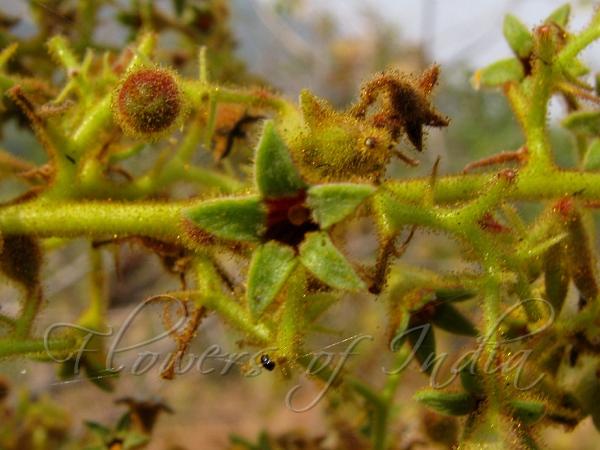|
| Gum Karaya |
|

|

| File size | 275611 |
| Original date | 1/10/10 10:29 AM |
| Resolution | 924 x 693 |
| Flash | Flash did not fire, auto |
| Focal length | 6.0mm |
| Exposure time | 1/160s |
| Aperture | 6.3 |
| Focus Distance | |
| Metering Mode | Multi-segment |
| Camera make | Canon |
| Camera model | Canon PowerShot S5 IS |
| Sensor type | OneChipColorArea |
|
|
|
Photo: |
Botanical name: Sterculia urens Family: Sterculiaceae (Cacao family)
Gum karaya is a medium-sized, deciduous tree to 15 m in height, usually with
a clean, crooked, short bole up to 2 m DBH; branches large, spreading; bark
thick, greyish-white or reddish, smooth, shining with a thin, white
transparent outer coat, peeling off in papery flakes. Leaves on long petioles,
crowded at the ends of branches, palmately 5-lobed, 20-30 cm diameter;
tomentose beneath, glabrous above, entire, acuminate; stipules caducous.
Flowers greenish yellow, small, in terminal panicles; follicles 4-6,
ovoid-oblong, about 2.5 cm diameter, coriaceous, red, covered with stinging
hairs. Infact, the specific name urens means stinging in reference to
the hairs on
flowers. Fruit consists of 5 sessile, radiating, ovate-lanceolate hard,
coriaceous carpels, 7.5 cm long, red when ripe, covered outside with many
stiff bristles.
Trees exude gum karaya used in foodstuffs as emulsifiers, stabilizers and
thickeners. Seeds are eaten after roasting. Seeds and young tender roots are
eaten in times of famine.
| Identification credit: Dinesh Valke, Prashant Awale | Photographed in Maharashtra. |
• Is this flower misidentified? If yes,